Training
Training Menopause Clients is much more than Lifting Heavy Sh*T
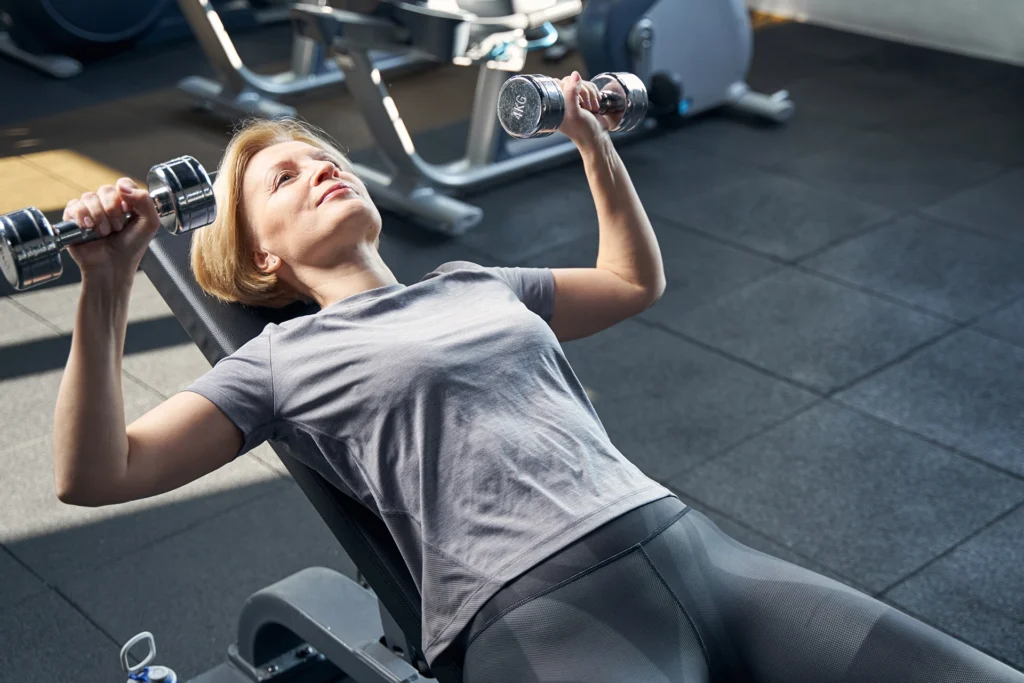
Here’s the thing: lifting heavy is good – brilliant, even – when it’s done right, in the right body, at the right time. But if you’re a fitness professional thinking that’s the whole picture, you’re not only missing the nuance, you’re potentially doing harm.
Resistance Training ≠ Powerlifting
Resistance training is vital; however, let’s try not to be judgmental as to where this resistance is sourced. Resistance training can involve exercises such as Pilates, yoga, crawling, Turkish get-ups, resistance bands, or simply getting down to the floor and back up with control. To put it bluntly, it all depends on the human in front of you.
We need to broaden our definition of resistance training and meet clients where they are, not where Instagram says they should be.
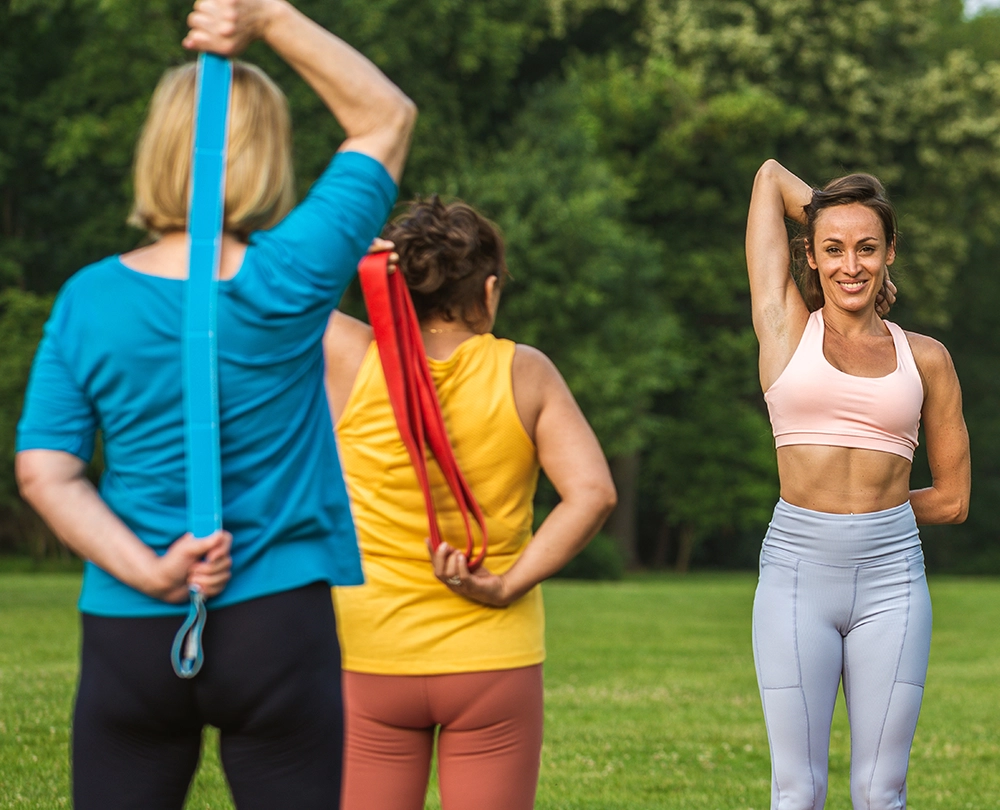
Not All Pelvic Floors Can Bear Down and Brace
You can’t spot a prolapse across the gym floor. And yet, too many trainers load up barbells without asking the right questions. Birth trauma, pelvic pain, incontinence – these are part of many women’s lived realities, especially in midlife.
If your programming ignores pelvic floor health, you’re not training the whole woman.
At the very least, please include the words “pelvic floor” in your core descriptions. It is a muscle, just like any other. It has a name. It has a function. It can get weak. It can get strong. And it can become overtrained and dysfunctional. So please say the words! The key is to normalise these words with yourself, your clients and whenever you are talking about the midsection.
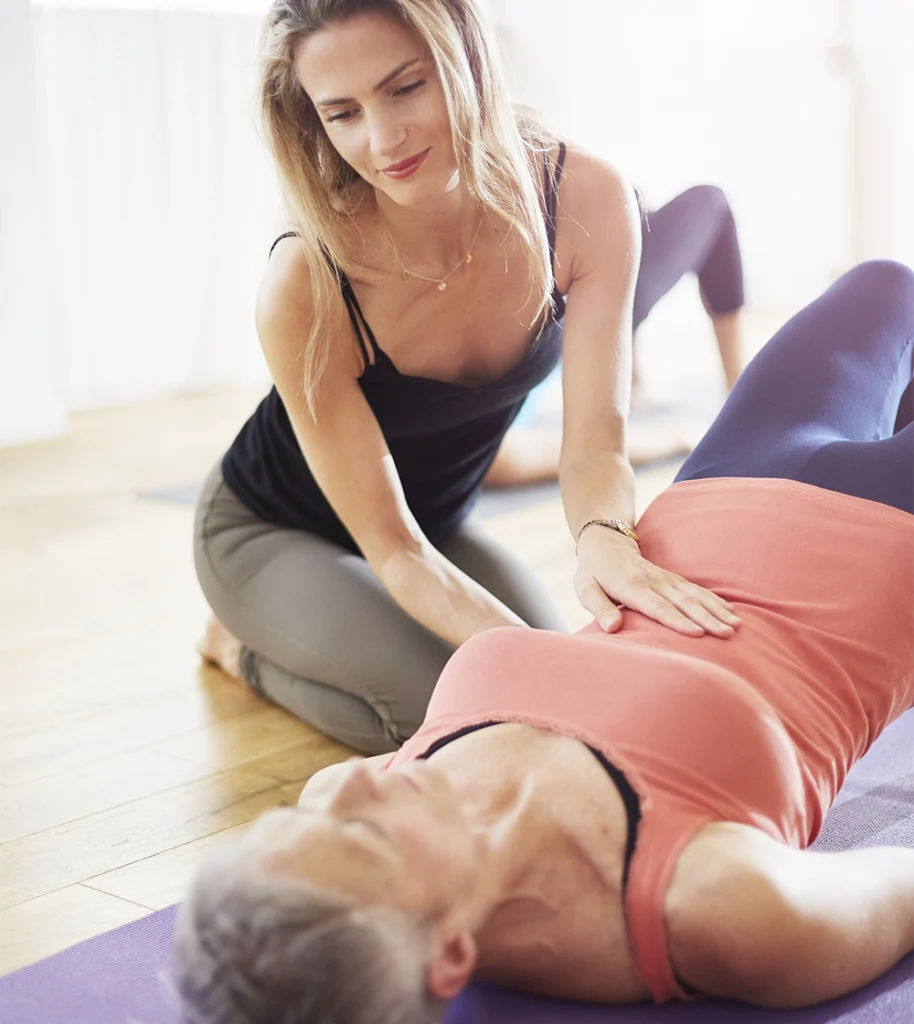
Hormones Mess with More Than Just Periods
When oestrogen drops, it’s not just about missed periods or mood swings. We’re talking tendon changes, recovery shifts, temperature dysregulation, sleep issues, brain fog – the works!
That four-day split and high-intensity bootcamp might’ve worked at age 30, but it’s often a recipe for burnout in midlife. Trainers need to understand the internal landscape, not bulldoze through it. For many women, this has been the kind of exercise identity that has served them well before hitting peri-menopause. So, your role involves fully understanding rest and being able to prioritise this in the women you influence (and yourself!).
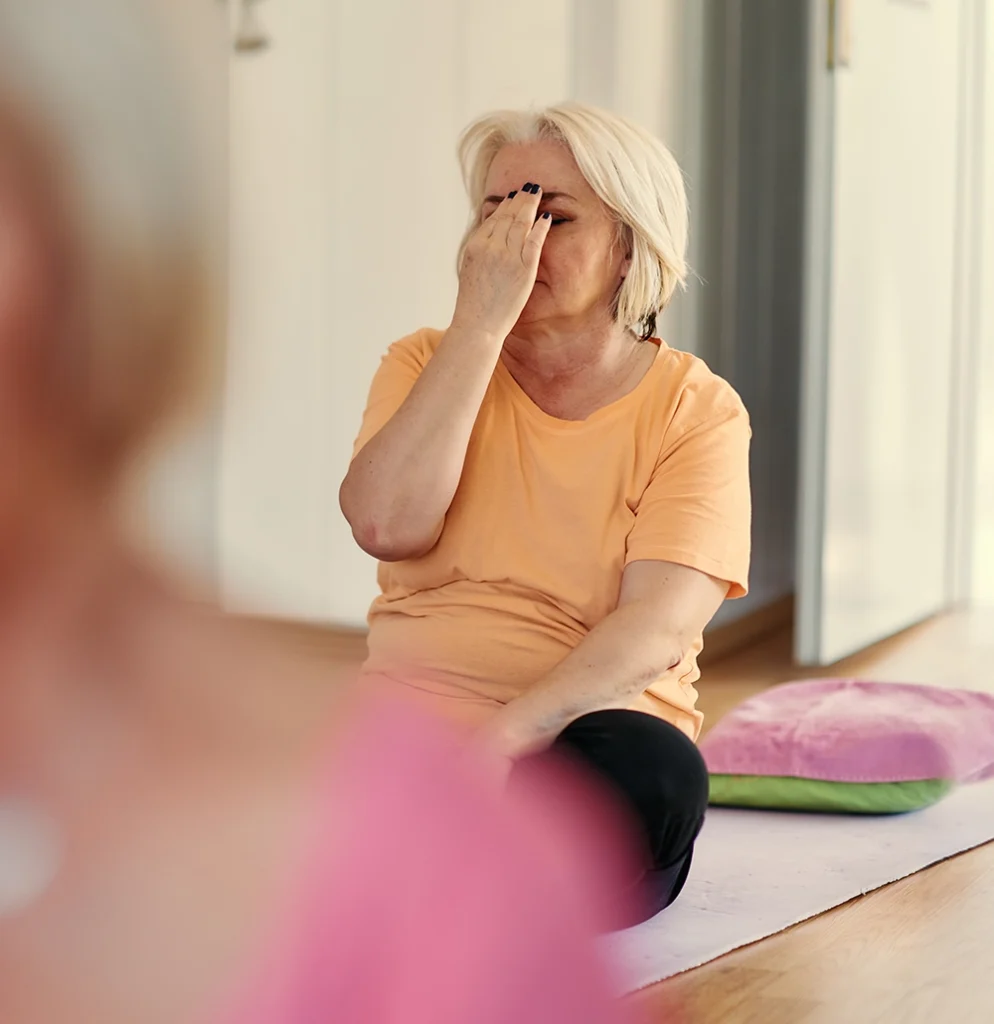
Train the Symptoms, Not the Stereotypes
Stop programming based on age or assumptions and start programming based on symptoms. That means asking good questions and adjusting your programming, based on what’s coming up. For example, some clients may be struggling with:
Body Composition Changes
Sleep Disruption
Hot Flushes and Night Sweats
Cognitive Dips
Pelvic Floor Dysfunction
Each of these needs different movement strategies – not just a “lift heavy shit and eat more protein!” approach.
Stress Is the Real Saboteur
You could write the perfect strength plan, but if your client’s nervous system is fried, nothing will stick because cortisol blocks adaptation, increases belly fat storage, and screws with recovery.
Instead of just chasing volume and intensity, remember all clients need breathwork, walking, mobility, and for someone to ask how they’re sleeping. You then need to work with their individual situation.
Many trainers feel genuinely uncomfortable bringing up peri-menopause – and it’s easy to see why. In a society that doesn’t treat ageing kindly, asking someone if they “might be in menopause” can feel like you’re calling them old. But menopause can’t be confirmed by age alone – it’s verified through symptoms. That means you need to get comfortable having the conversation and being familiar with what those symptoms look like in your clients. Whether or not you’ve lived it yourself, this is part of your role.
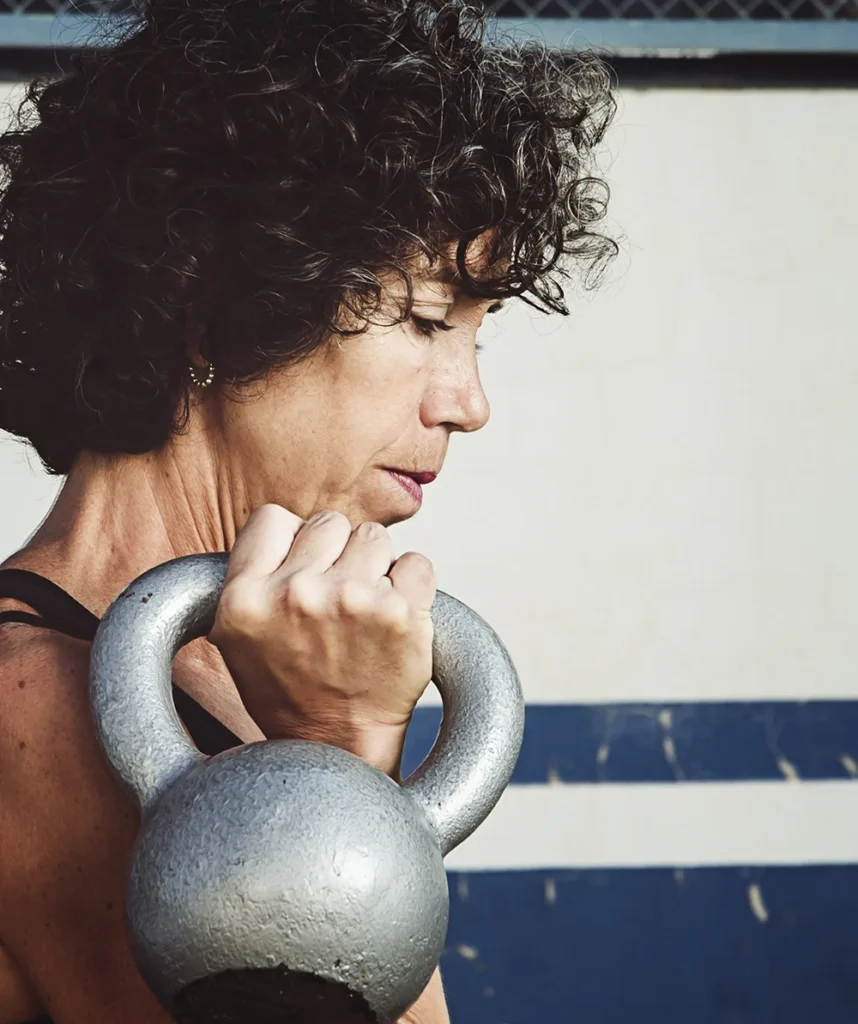
Progressive Overload ≠ Progressive Exhaustion
Too many women are already exhausted – physically, mentally and emotionally. Strength training should build capacity, not drain it.
Yes, progressive overload is key – but only if we program for recovery too. Prioritise joint integrity, smart regressions, and functional gains that help them feel capable in life, not just strong in the gym.
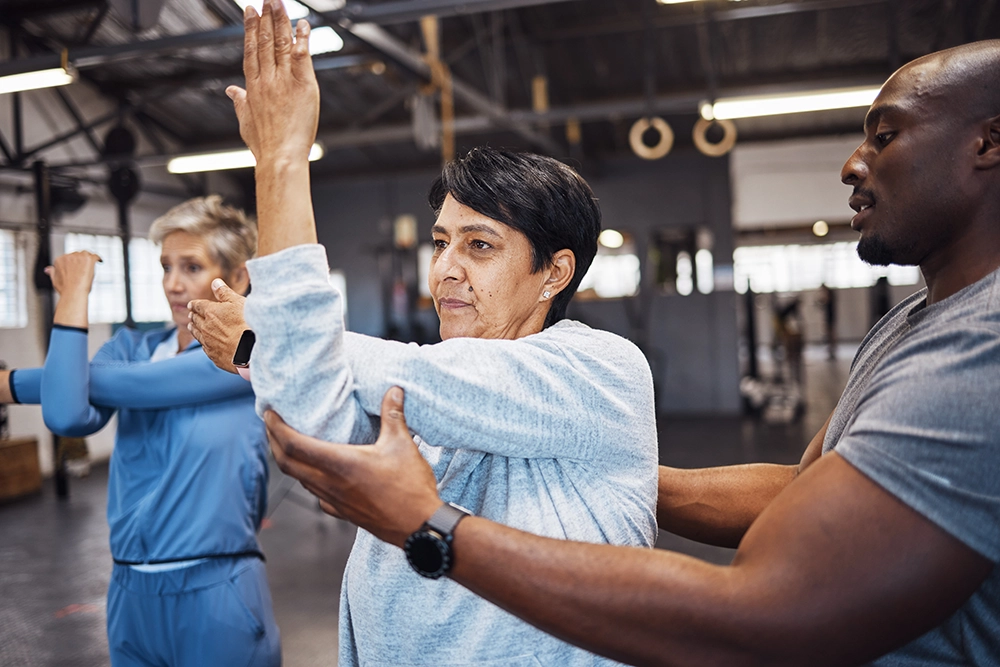
Language Matters
Stop selling “transformation” and start speaking to autonomy. Cut out the “fat-blasting”, “booty-sculpting” nonsense and, instead, say: “We’re building a strong, independent body that can carry on for the next 30+ years”.
You should also do away with fear-based motivation. Yes, brain and muscle function decline with age, but that has more to do with the consistency of movement, rather than the type of movement itself.
We have the ability to get stronger at any age, stage, race or gender.
5 Questions Every Trainer Should Ask Midlife Clients
Are you sleeping through the night?
Have you noticed changes in your cycle, mood, or energy?
Do you feel any discomfort or heaviness in your pelvic floor when lifting?
What movements feel great in your body right now?
How do you want your body to feel in 10 years?
Trainers Need Menopause Education
If you’re working with women over 40, you’re already training menopause clients – whether you realise it or not. And the women who are younger than that, well, thanks to social media, they can already be interested in what this means for them down the line.
Women deserve nuance. So, get educated. Learn what oestrogen does to fascia, cognition, tendon health and sleep. Get tools to modify based on symptoms. The right education will change your practice and keep your clients coming back, for life.
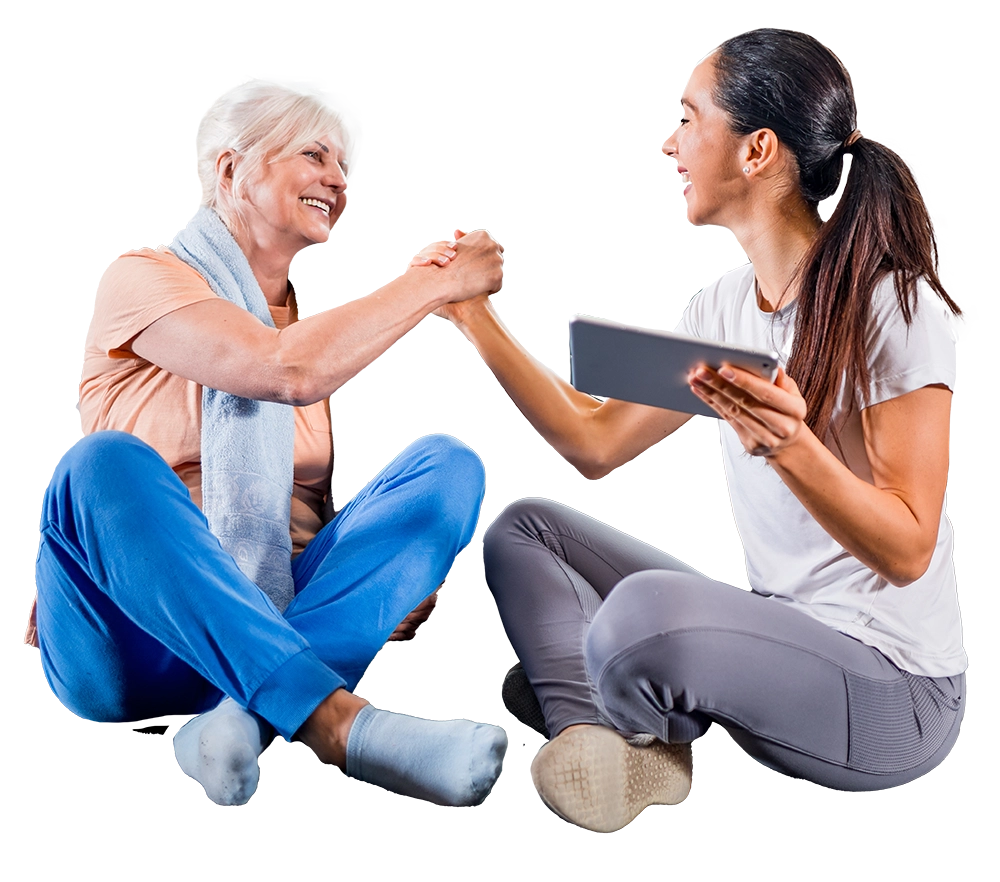

Mish Wright
Mish (BEd, DipTeach) is a writer, speaker, and educator. She was named the 2024 Fuel Woman of the Year for her advocacy for women’s health in the fitness industry and has been recognised as Educator of the Year in New Zealand (2023) and Australia (2021, 2024). As the Head of Education at Women’s Fitness Education (WFE), an RTO delivering Certificates III and IV in Fitness, Mish organises and delivers specialised women’s health education to support students throughout their studies. Her four women’s health courses – sold in five countries – have been completed by thousands of fitness professionals worldwide. Learn more at mishwright.com.
If this article got you thinking differently, download the Peri-curious Symptom Checklist – a powerful tool to help you and your clients start having the right conversations. Or if you’re ready to train with more clarity and confidence, the Menopause Training Matrix™ Workshop is where it all comes together.